Today we’ll continue our series about the Spanish Theme Park History with the third article. Every two weeks we’re publishing one of eight articles about the history of thirteen Spanish amusement and theme parks. Some of them no longer exist, but some others are still operating and receiving guests nowadays. In this series, we travel in time through 168 years in theme park history, starting in 1853, to our days in 2021. In this article we’ll focus on two very special parks, the first one is Monte Igueldo, which still operates in the Spanish region of the Basque Country and, the second one, Parc d’Atraccions de Montjuïc, which was located in Barcelona.
– In the past, many of our images have been posted, featured, and shared on forums, social media platforms and websites around the web. We work hard to provide the coverage that we do, and we encourage our audience to share our content and use our images, BUT ONLY IF proper credit is given to thecoasterkings.com. Thank you! –
Monte Igueldo (Donostia, 1912)
Monte Igueldo amusement park is located in the Spanish region of the Basque Country, in the city of Donostia. In several aspects it’s very similar to Barcelona’s amusement park Tibidabo; it’s also located on the top of a mountain, it can be accessed through a funicular, it’s an old park with a lot of history, and one of its main attractions are the views of the Kontxa Hondartza (Shell Beach) and the city of Donostia. However, this park’s classic and ancient essence much more present than at Tibidabo both in its attractions and facilities.
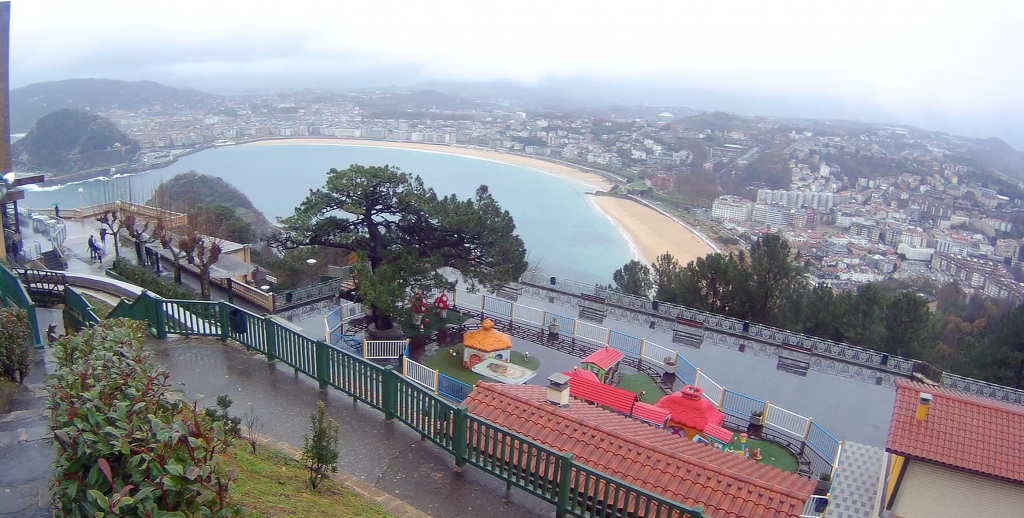
Source: European Coaster Kings
The history of this park begins in 1911, when several owners in the area created a company and bought the entire mountain Monte Igueldo. Once they had acquired the mountain, they began to build a leisure center, which basically consisted of a casino (which later became a hotel), a luxury restaurant, a large tower that had been a lighthouse and a funicular that made it easier to get to the top of the mountain. The funicular still operates today and has remained mostly the same since its 1912 inauguration over 100 years ago.
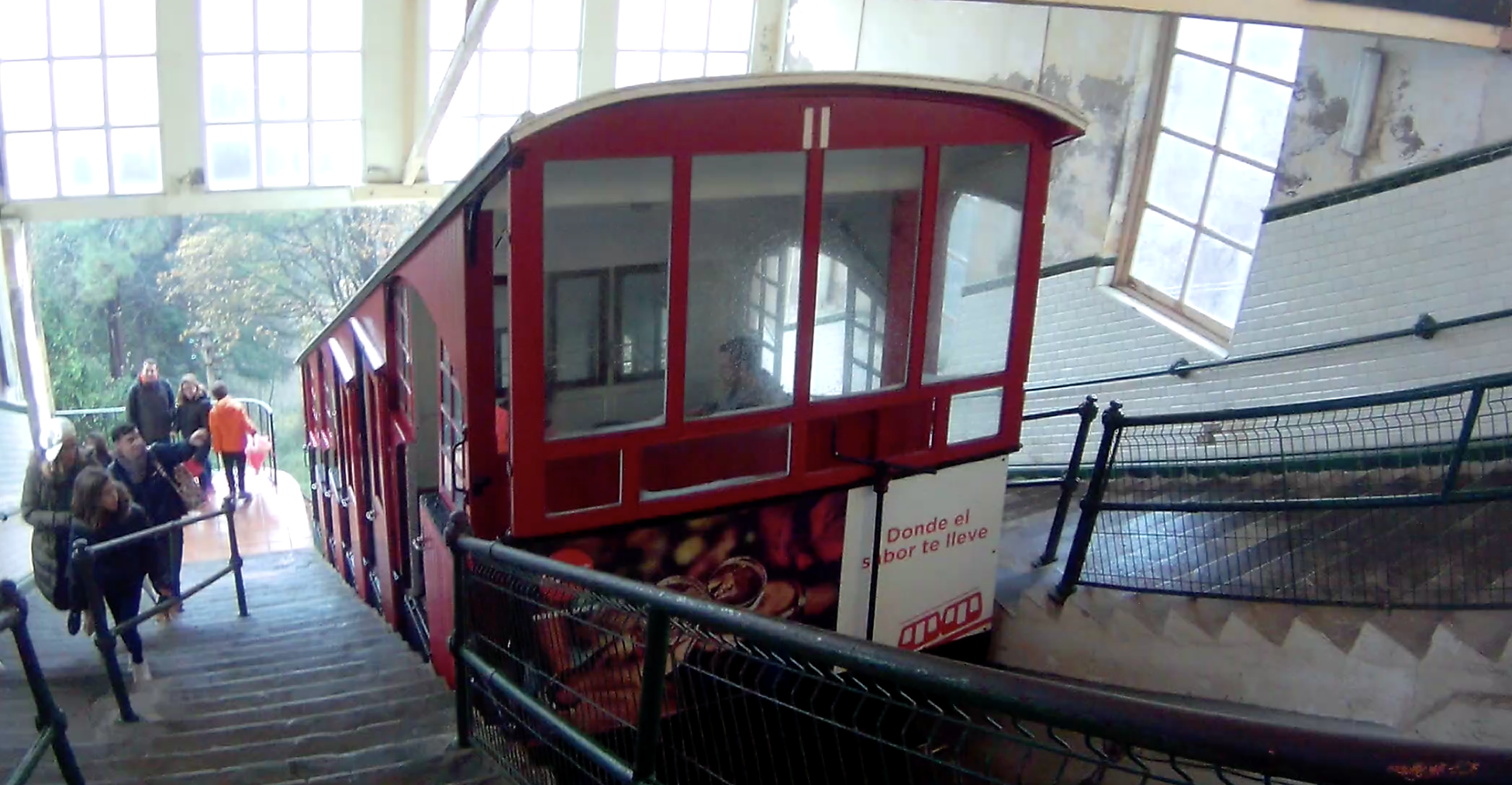
Source: European Coaster Kings
In 1929, seventeen years after the opening of the leisure center, its owners visited the Ibero-American Exposition in Seville (southern Spain), where they saw various attractions and brought them to Donostia the following year. The most emblematic attraction of this park is Montaña Suiza (Swiss Mountain), a roller coaster that was built in 1928 or 1930 depending on the source,that is the 10th oldest operating rollercoaster in the world. Its name Montaña Suiza (Swiss Mountain), instead of Montaña Rusa (Russian Mountain, literal translation of how roller coasters are called in Spain) seems to be due to the fact that it was built by a Swiss engineer, although there are other sources that mention the German engineer Erich Heidrich.
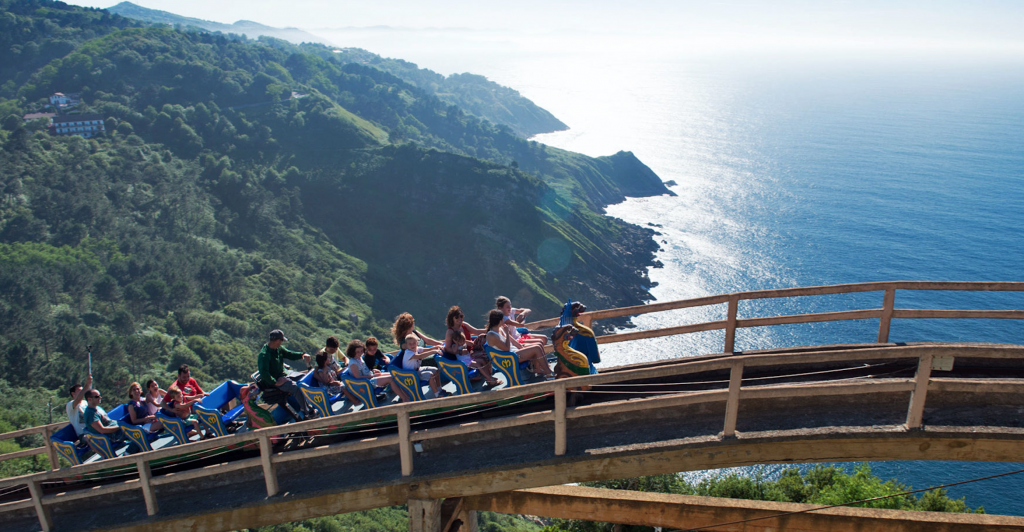
Source: https://www.monteigueldo.es/home
Montaña Suiza is a scenic railway steel roller coaster, its layout crosses the park and offers impressive views of the sea. Although currently its track is made of steel, the ride had originally wooden rails, the rest of the structure is made of concrete. This roller coaster can operate with a maximum of two trains, made up of two 5-row cars, with two people per row (20 people per train). The train is made of wood and its speed is controlled by a brakeman or brakewoman located between the two cars. The coaster’s lift hill is located in the middle of the layout.
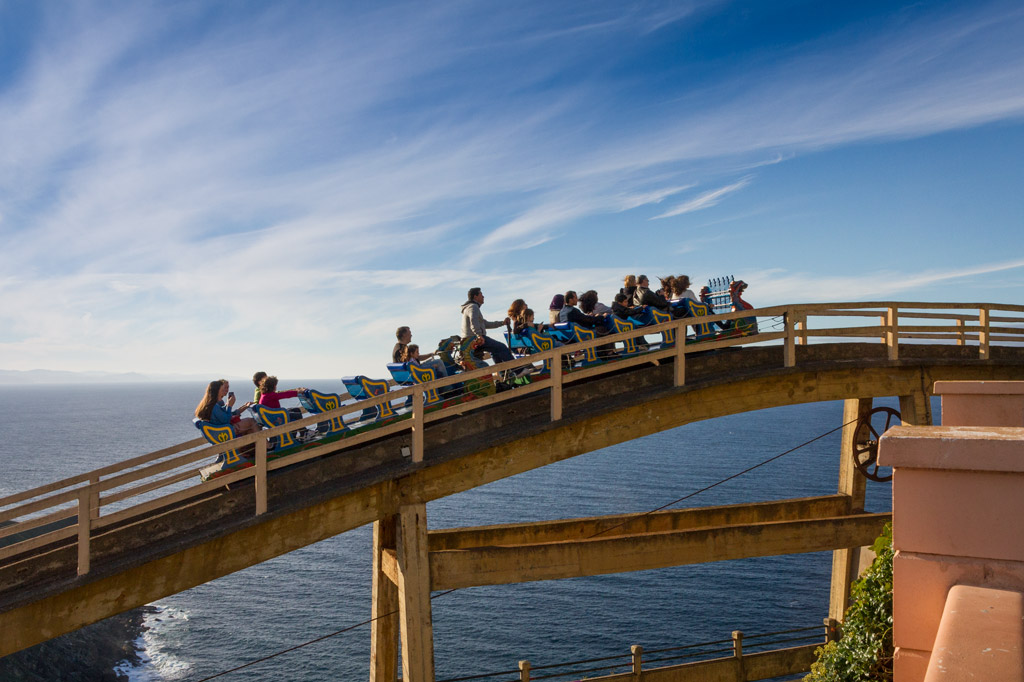
Source: https://equipatgedema.cat/es/espana/pais-vasco/monte-igeldo-montana-rusa-recuerdos/
Monte Igueldo amusement park is still operating today, it’s one of the oldest amusement parks in the world that still receives guests. Most of its attractions and facilities have remained the same since its opening, so it can almost be considered a mixture of an amusement park and a museum. It’s a park that can be visited in half a day, the entry is free but it’s necessary to pay a ticket for each attraction.
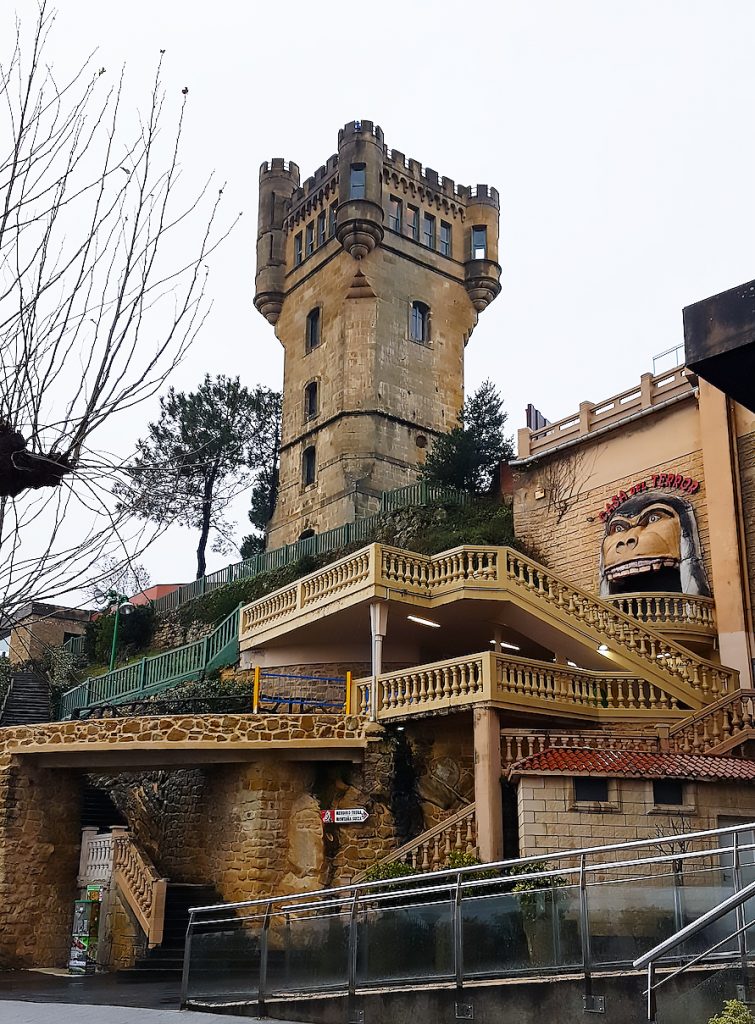
Source: European Coaster Kings
Parc d’Atraccions de Montjuïc (Barcelona, 1966-1998)
Montjuïc’s Amusement Park was built in Barcelona, very close to the sea, on the grounds where the 1929 Barcelona World’s Fair had been celebrated. The park was built, alongside other plans to improve the city and open it to the sea, in the years following the Civil War and the hardest years of the dictatorship in Spain. Formerly, on the same grounds, another small amusement park called Maricel Park (1930-1936) had been installed.
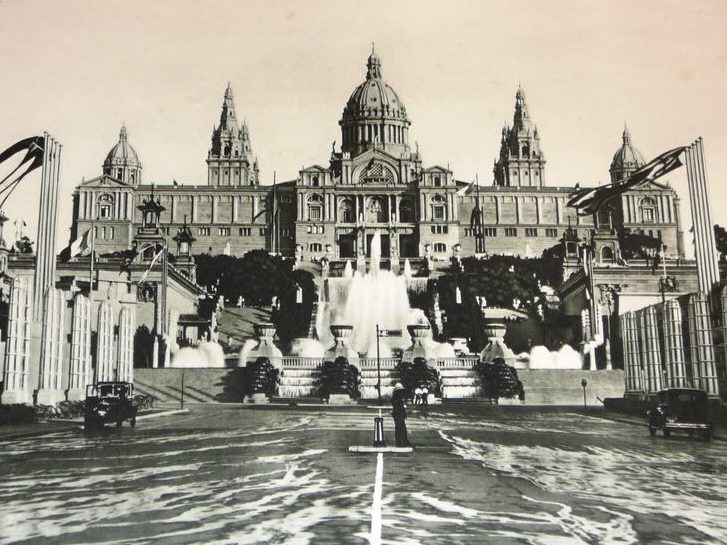
Source: https://www.pinterest.es/pin/569001734166471285/
The project was an initiative of the Venezuelan businessman José Antonio Borges Villegas, who had previously created the Coney Island amusement park in Caracas (Venezuela). The construction of the Montjuïc’s Amusement Park began in 1963 and the park was inaugurated in 1966. On the opening day, the park had about forty rides and attractions. One of the most interesting opening day attractions was a ghost train built inside a building that had formerly been used as a munitions dump during the previous war. The park also included a theater with capacity for 2,150 seated people.
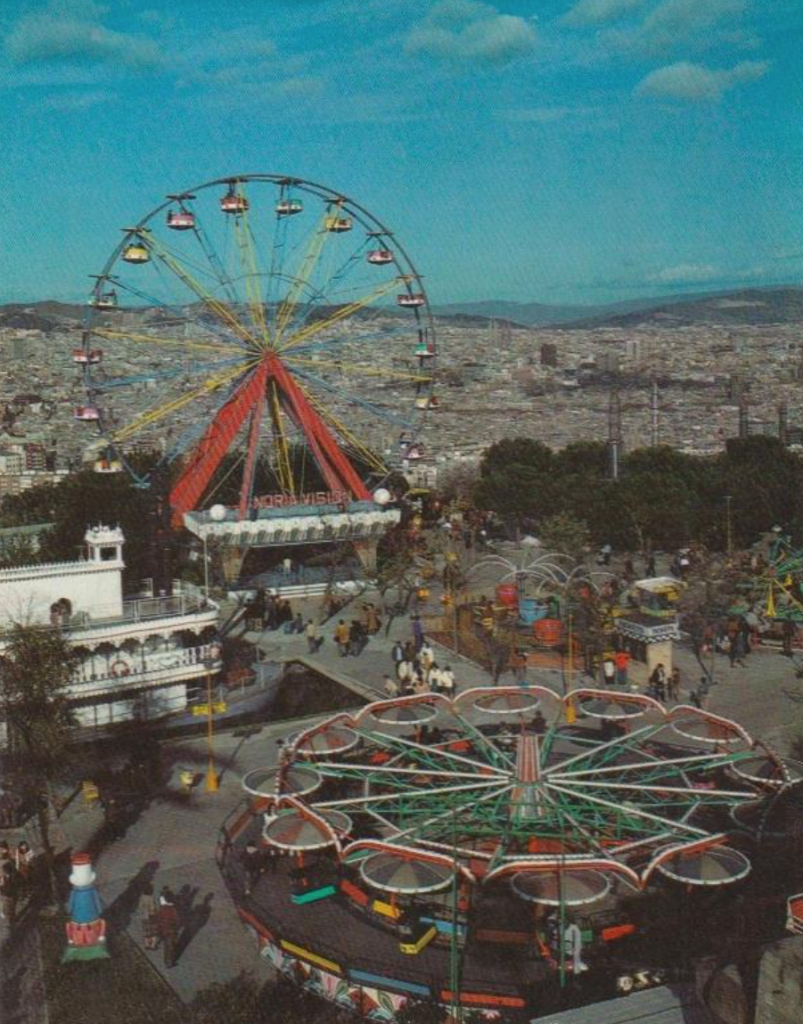
Source: https://www.todocoleccion.net/postales-cataluna/barcelona-n-65-parque-atracciones-montjuich-vc-editor-fabregat-circulada-1992~x52416334
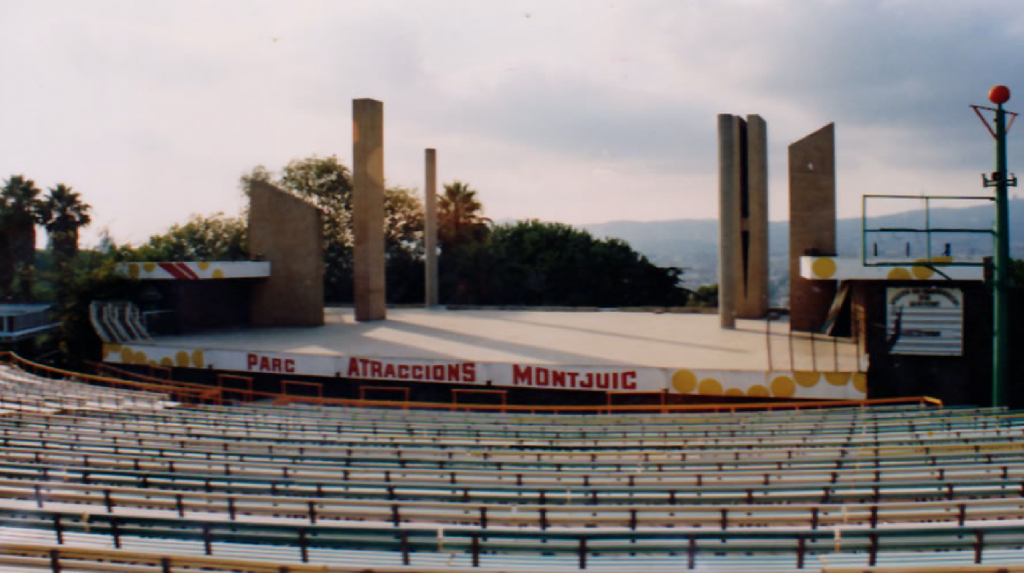
Source: https://www.achus.biz/tag/jardines-de-joan-brossa/
Due to the good reception of the visitors, the park gradually increased its offerings and each season the number of people who visited it increased. One of the most relevant new attractions was a gondola lift system that was inaugurated in 1970 and is still operating today. It should be noted that the Montjuïc’s Amusement Park was inspired by Disneyland Park in California, since its owners wanted to have some themed restaurants and attractions with particular emphasis on the decoration of the park.
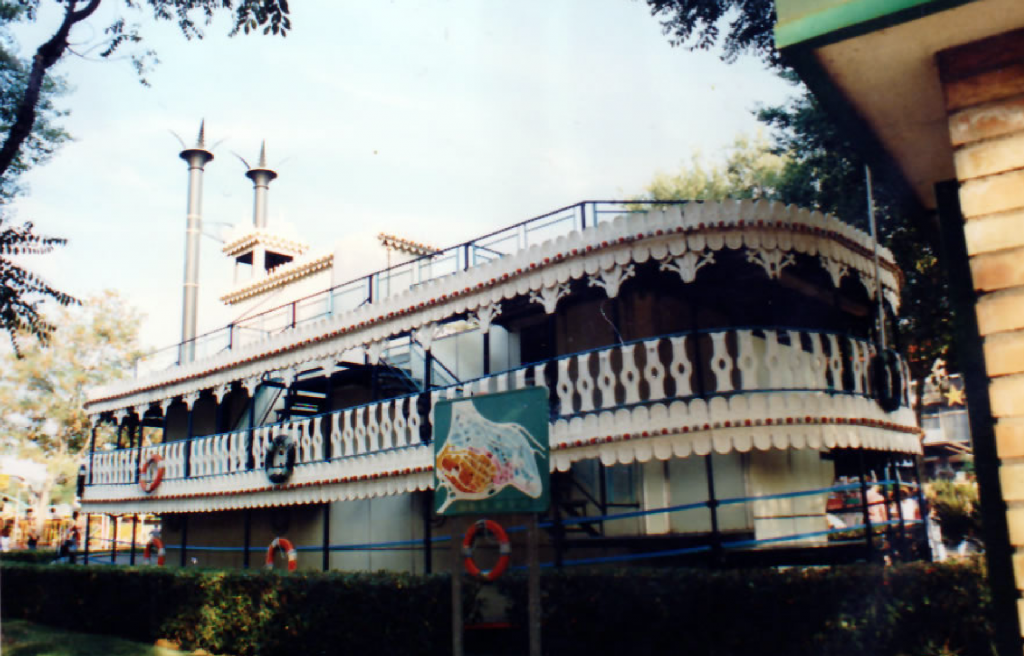
Source: https://www.achus.biz/tag/jardines-de-joan-brossa/
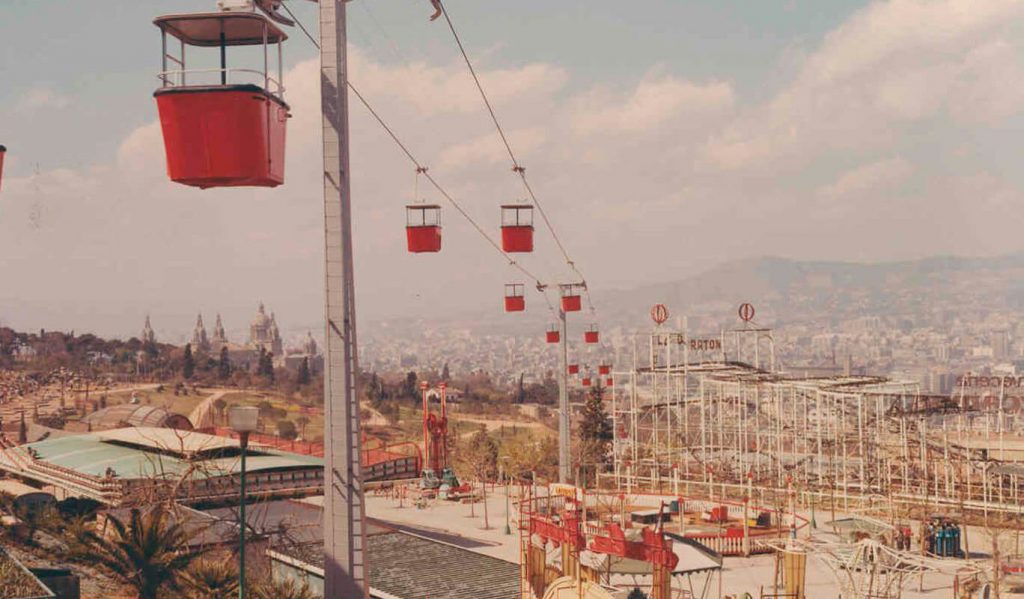
Source: https://www.laramblabarcelona.com/parque-de-atracciones-de-montjuic/
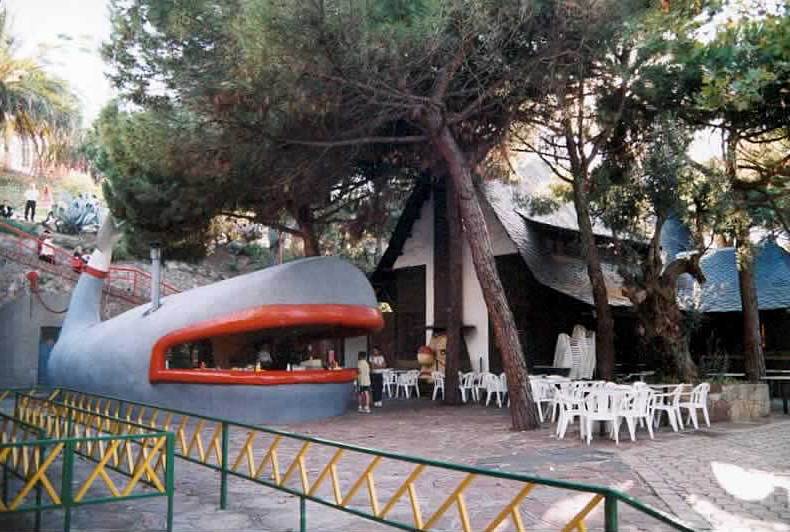
Source: https://eltranvia48.blogspot.com/2018/10/20-anos-sin-el-parque-de-atracciones-de.html
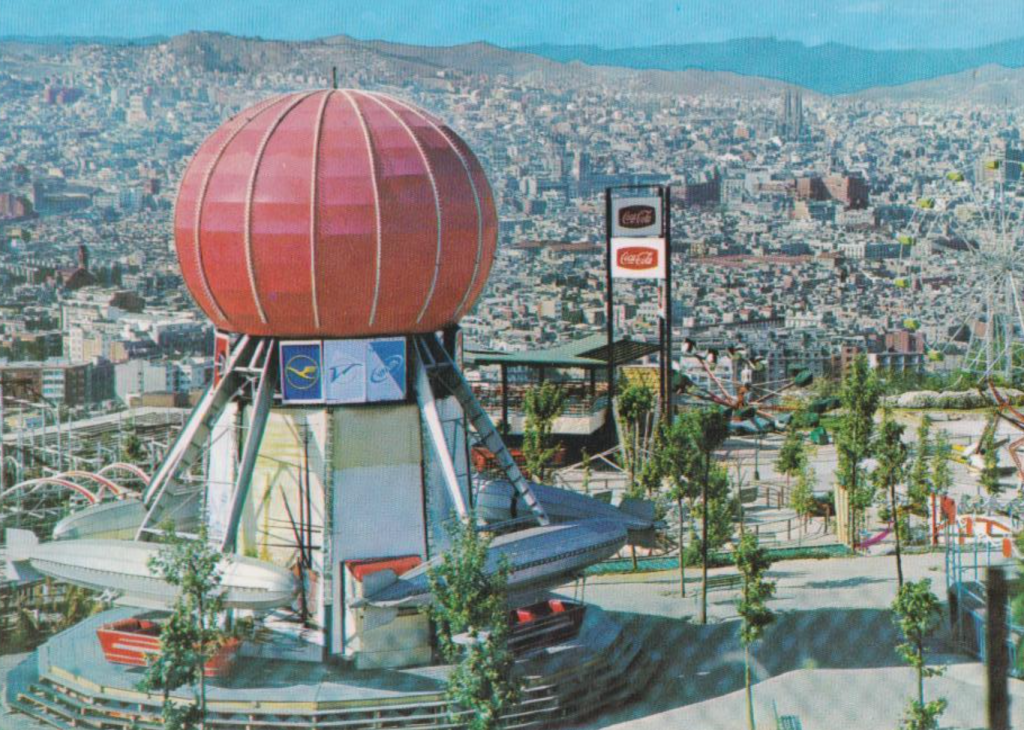
Source: https://www.todocoleccion.net/postales-cataluna/p-1084-postal-fotografica-barcelona-parque-atracciones-montjuic~x49279730
In 1974 Montjuïc’s Amusement Park was bought by a holding company that was significantly involved in Madrid’s Amusement Park (1969). Starting in 1975, a major renovation of the facilities was done, and several new attractions were built. Throughout the 1990s, Tibidabo amusement park, the main competitor of Montjuïc’s Amusement Park, also began a process to improve the park, so Montjuïc’s Amusement Park started another renovation process incorporating new attractions and more extreme thrill rides. In 1990 the ride Boomerang, a Vekoma Boomerang roller coaster, was inaugurated and it became the most famous ride of the park.
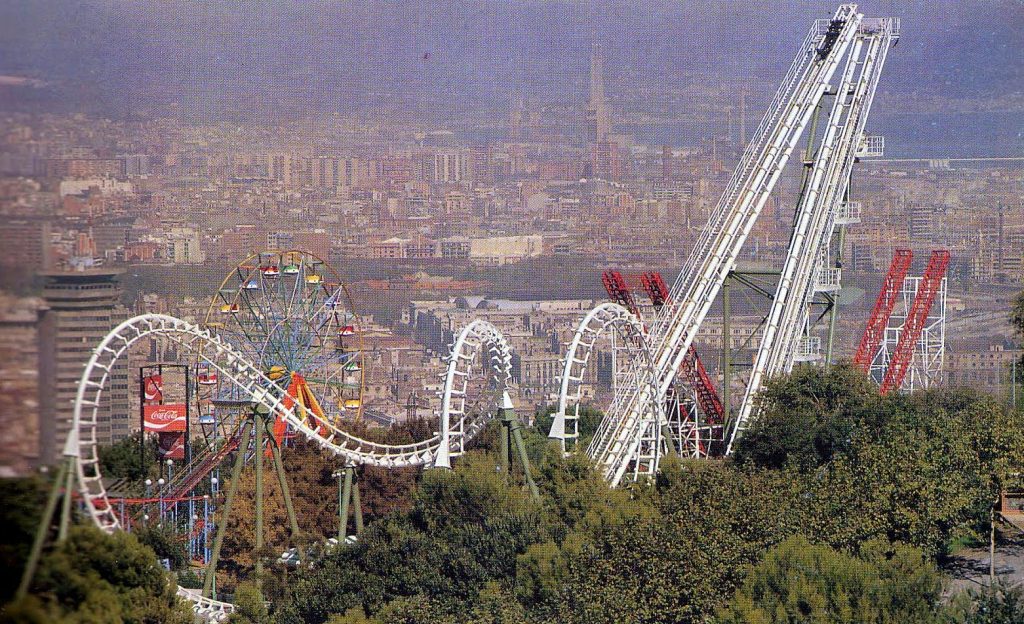
Source: https://www.barcelonaenhorasdeoficina.com/barcelona-nueva-orleans-tienen-algo-comun/
The 1992 Barcelona Olympics had a very negative impact on the Montjuïc’s Amusement Park. It was located very close to the main sports facilities and vehicle traffic was prohibited throughout the area. Along with the opening of PortAventura in 1995, the park ended up losing the majority of its visitors and closed three years later, in 1998.
Once the park closed, some of its attractions were sold, some flat rides and a roller coaster were transferred to a very small park in Platja d’Aro (PP’s Park) and others, like Boomerang, were transferred to Six Flags New Orleans. Nowadays, the area where the park was located is a public garden named Jardins Joan Brossa (Joan Brossa Gardens), dedicated to an important Catalan poet of the 20th century. Some of the sculptures that originally decorated the amusement park have been preserved in the garden.
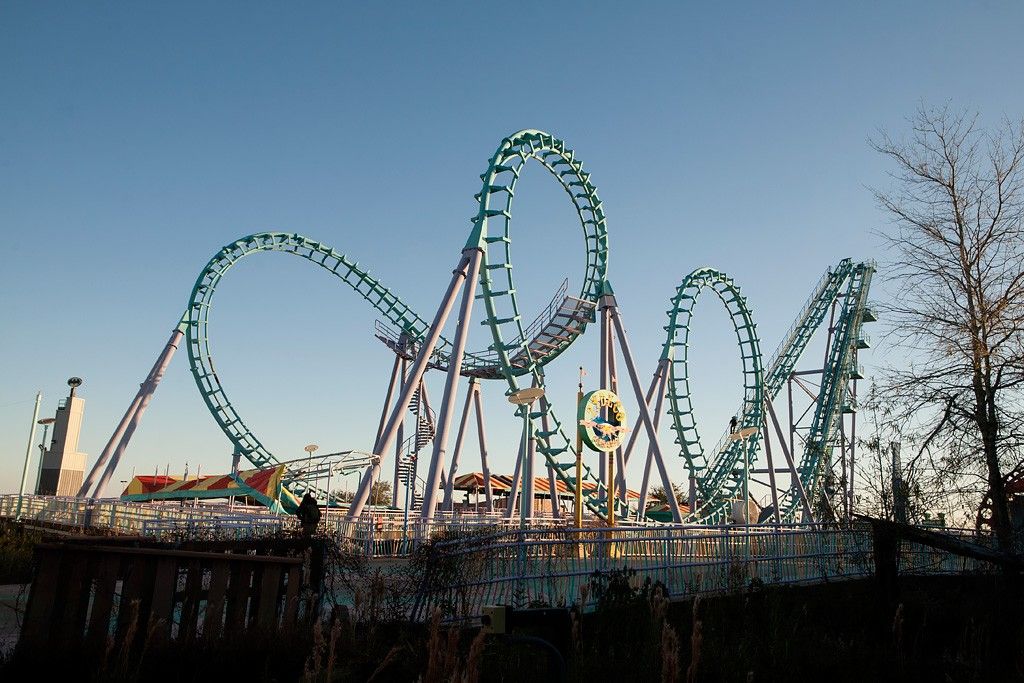
Source: https://www.pinterest.com/pin/385761524314037543/
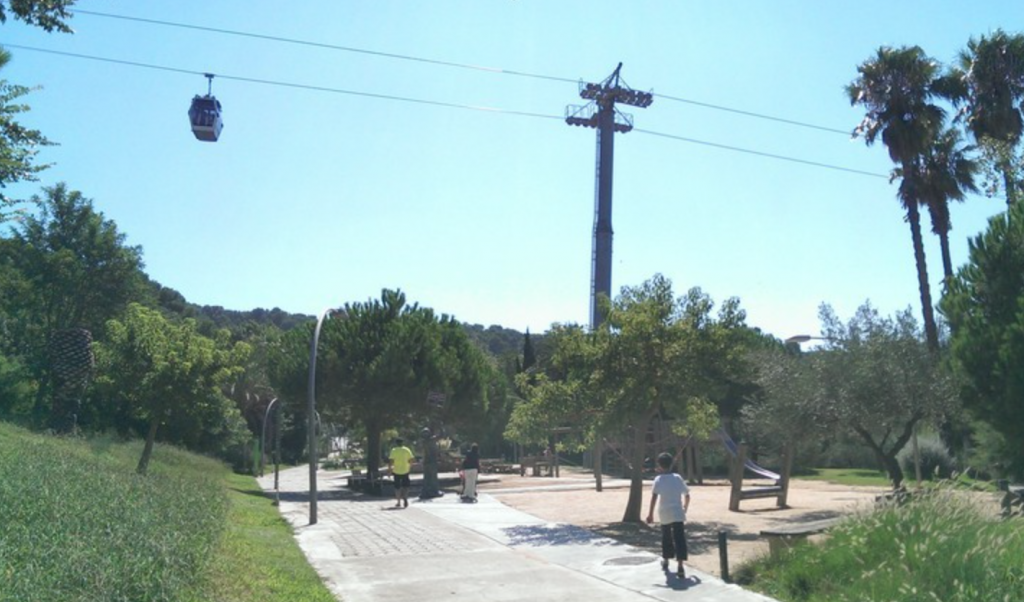
Source: https://www.conlosninosenlamochila.com/2015/07/barcelona-con-ninos-montjuic-jardins-mirador-joan-brossa.html
3D Recreation of Parc d’Atraccions de Montjuïc
Sources used for this article:
Barceló Experiences. (n.d.). Monte Igueldo, un enclave lleno de historia, diversión y buenas vistas. https://www.barcelo.com/guia-turismo/es/san-sebastian/que-ver/monte-igueldo/
Barcelona en horas de oficina. (2015, January 9). Barcelona y Nueva Orleans tienen algo en común. https://www.barcelonaenhorasdeoficina.com/barcelona-nueva-orleans-tienen-algo-comun/
Brotons, R. (2011). Parcs d’Atraccions de Barcelona (2nd ed.). Albertí.
Coney Island, en Caracas la diversión no era virtual ni sedentaria. (2016, November 13). Caracas Cuéntame Caracas. https://caracascuentame.wordpress.com/2016/11/13/coney-island-en-caracas-la-diversion-no-era-virtual-ni-sedentaria/
Esther y Josep. (2015, January 21). Listado de las atracciones. Achus. https://www.achus.biz/atracciones-del-parque-de-montjuic/
Esther y Josep. (2016, December 15). Imágenes del Boomerang en Six Flags Nueva Orleans. Achus. https://www.achus.biz/imagenes-del-boomerang-en-six-flags-nueva-orleans/
Esther y Josep. (2019, September 28). 21 años sin el Parque de Atracciones de Montjuic. Achus. https://www.achus.biz/tag/boomerang/
Pa-Community. (n.d.). Montaña suiza en Parque de Atracciones Monte Igueldo. https://www.pa-community.com/parques/parque-atracciones-monte-igueldo/atracciones/montana-suiza
Sánchez, M. (2017, June 2). ¿Qué fue del parque de atracciones de Montjuïc? Metropoli Abierta. https://www.metropoliabierta.com/vivir-en-barcelona/ocio/que-fue-del-parque-de-atracciones-montjuic_1562_102.html


